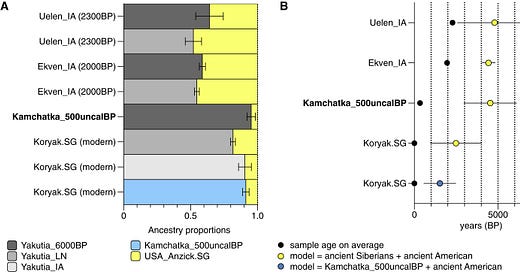New Ancient DNA Discoveries Show Native Americans Returned to Siberia
A discovery of gene flow and migration paints a realistic but complicated prehistory of northern Asia and the peopling of the Americas following the last Ice Age
Three people perished on a riverbank in northeastern Siberia's Kamchatka Peninsula some 500 years ago. Their remains have revealed an intriguing fact, they have some North American ancestry based on their DNA. This finding was published in Current Biology1 two days ago. The findings indicate that although the progenitors of today's Native Americans originated in Asia, the migration was not one-way when taken into account alongside other ancient and modern genomes. Instead, the Bering Sea region served as a crossroads where people frequently traveled by boat across continents for thousands of years.
This is not entirely new. According to a study2 from 2019, genetic and linguistic data demonstrated that humans who lived in northwest Alaska between 2,200 and 500 years ago may have somehow crossed across the Bering Sea into Siberia. It was not known, however, whether this gene flow of Native American heritage back into Asia was typical or an anomaly. As a result, the concept of reverse migration adds some complexity while also increasing realism to this region's past.
Why is it realistic? Well, humans are amazingly capable of traveling great distances. We live on every continent and even those in the International Space Station are alive outside of Earth. It is common knowledge that prehistoric peoples from Siberia crossed the Bering Strait into Alaska starting around 20,000 years ago, then moved south across the Americas. Because sea levels were significantly lower at the time, hunter-gatherers could enter the new continent by crossing a frozen land bridge or by boating along its coast.
As the glaciers retreated, the Bering Sea rose and separated the two continents as the end of the last Ice Age, some 11,500 years ago. However, more immigrants kept coming, combining with and displacing earlier populations to change the genetic makeup of indigenous people in the Americas.
The remains of the three people were discovered in 2019 by archaeologists excavating a location on the banks of the Kamchatka River. Ancient DNA was extracted from the bones and examined by the experts. They discovered that these individuals were closely linked to the populations of present-day Kamchatkan. Surprisingly, though, they also carried genes that seemed to have originated from populations residing in North America.

Keep reading with a 7-day free trial
Subscribe to Anthropology.net to keep reading this post and get 7 days of free access to the full post archives.


